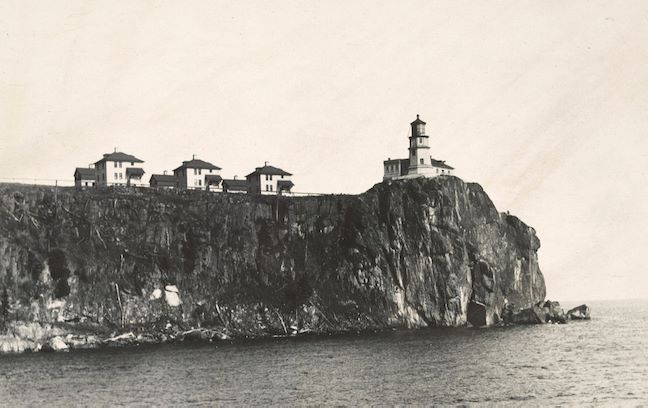Kate Walker here, keeping the light on Robbins Reef.
You’ve recently had the excitement of a total eclipse of the sun. My son Jacob, who succeeded me as keeper when I retired in 1919, and I both watched a partial eclipse on January 24, 1925. The path of totality was about 85 miles wide at the beginning and traversed the west end of Lake Superior, the northern portion of Lake Michigan, and the southern part of Lake Huron. The eclipse began at sunrise along a line slightly east of Detroit, Michigan. In those localities the sun rose eclipsed.

The path of totality continued eastward early after sunrise and was central over Buffalo, New York, with a total duration of nearly two minutes. New York City was on the southern edge of the path, which was then about 100 miles wide, and the middle of the eclipse occurred in New York at about 9:11 a.m. East of New York the path of totality widened so that all of Long Island Sound and all of the island itself except the extreme southern corner, fell within the total path, which was central over New Haven, Connecticut, about 9:13 a.m. Nantucket Lightship fell almost at the center of the total phase, which had a duration there of over two minutes at about 9:17 a.m.

Various stars and planets were recognized in the vicinity of the eclipsed sun during the time of total darkness. The nearest was the third magnitude star Dabih, in the constellation of Capricorn, slightly southwest of the sun. The planets Venus, Mercury, and Jupiter were visible west of the sun, and the bright stars Altair and Vega were seen at some distance to the southwest.
The entire eclipse lasted between two and two-and-a-half hours. We used smoked glasses to protect our eyes.
Were any stars seen during the 2017 eclipse?
In the Second and Third Lighthouse Districts, with headquarters at Boston, Massachusetts, and Staten Island, New York, respectively, the keepers of 19 lighthouses and the masters of six lightships and one lighthouse tender submitted data on the January 24, 1925, eclipse, for transmission to the Hydrographic Office, Navy Department.
How would the visual observations submitted in 1925 have differed from the data collected in 2017?
 Information is from Lighthouse Service Bulletin, Vol. III, No 13, pp 59-60, January 2, 1925, and No. 15, p. 68, March 2, 1925.
Information is from Lighthouse Service Bulletin, Vol. III, No 13, pp 59-60, January 2, 1925, and No. 15, p. 68, March 2, 1925.
Submitted November 11, 2017
* * * * *
U.S. Lighthouse Society News is produced by the U.S. Lighthouse Society to support lighthouse preservation, history, education and research. Please join the U.S. Lighthouse Society if you are not already a member. If you have items of interest to the lighthouse community and its supporters, please email them to candace@uslhs.org.


I love this memory, Kate! I love amateur astronomy.